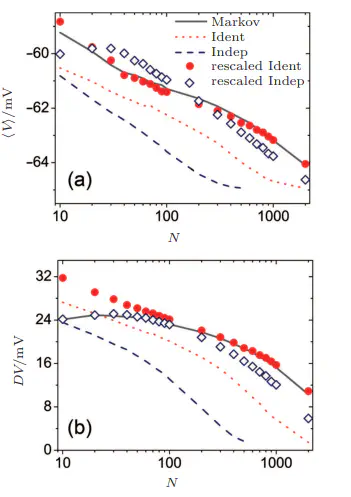
Abstract
Potassium accumulation and diffusion during neuronal epileptiform activity have been observed experimentally, and potassium lateral diffusion has been suggested to play an important role in nonsynaptic neuron networks. We adopt a hippocampal CA1 pyramidal neuron network in a zero-calcium condition to better understand the influence of extracellular potassium dynamics on the stimulus-induced activity. The potassium concentration in the interstitial space for each neuron is regulated by potassium currents, Na(+)-K(+) pumps, glial buffering, and ion diffusion. In addition to potassium diffusion, nearby neurons are also coupled through gap junctions. Our results reveal that the latency of the first spike responding to stimulus monotonically decreases with increasing gap-junction conductance but is insensitive to potassium diffusive coupling. The duration of network oscillations shows a bell-like shape with increasing potassium diffusive coupling at weak gap-junction coupling. For modest electrical coupling, there is an optimal K(+) diffusion strength, at which the flow of potassium ions among the network neurons appropriately modulates interstitial potassium concentrations in a degree that provides the most favorable environment for the generation and continuance of the action potential waves in the network.